Hello, happy September, and welcome to new subscribers!
It’s been a while since I’ve sent out a post, so before I tell you about Ferrara, I want to thank you for your patience. As I work my way through some of my favorite cities in Italy, I’ve taken the archive paywall off of all of my earlier Italian letters. You can find them here:
I still have a little bit more of Italy to write about in the next couple of weeks, including my favorite city of all, so keep an eye out for those in your mailbox.
Thank you all for being here, and for reading my letters - I’m so very grateful for your time.
{Ferrara, Italy}
It’s late in the afternoon on a very late October day when I arrive in the city of Ferrara, in the northeast corner of Italy.
I’ve rented an apartment close to the town center and - because I’ll be here for three weeks - I decide to pick up a few supplies on my way from the train station.
The Coop is crowded with people stopping by on their way home from work to pick up dinner. In addition to the two clerks manning the cash registers, there is one man who is simply there to keep people in the long line, and to direct them to the correct register when their turn comes.
Even though this man is there solely to direct traffic and to manage the crowd, a surprising number of people walk past him, right to the front of the store and put their baskets down on the check-out counter - line be damned. A few actually get away with it.
This is how I know that I’m not in the touristy bit of Italy anymore.
As much as I hate to make sweeping generalizations, I think it’s fair to say that Italians are not the world’s best queuers. The mass of bodies waiting for service at any given establishment is usually more swarm than line…and a certain percentage of the population seems to believe that it is their god-given right to be at the front of that swarm, no matter when they arrive.
It makes me laugh, until it makes me cry. As a relatively soft-spoken and introverted Midwesterner - whose knowledge of Italian is rudimentary at best - I usually find that the easiest course of action is just to go somewhere that no one is waiting. Call me a coward.
It’s a refreshing change, though, to be a little bit off the beaten path, after having just come from Venice. I don’t think Ferrara is a tourist hot spot even in the summer, but at this time of year I feel like the only English-speaking person around. One rainy afternoon I tour Castello Estense, the historic moated castle at the heart of the old town, and - outside of a few security guards and the woman in the gift shop - I appear to have the place to myself.
Which is not to say that Ferrara is necessarily quiet. It’s a good-sized city, with over 100,00 residents. There is a busy market surrounding the castle several days a week, and when I walk around the city walls the path is filled with locals jogging and exercising their dogs.
And then there are the bicycles. They’re everywhere - in numbers I haven’t seen since visiting Amsterdam. The city’s historic center is mostly closed to automobile traffic, and so bicycles have the run of the streets. It’s enough to send me to Google, where I find out that Ferrara is, in fact, known as the City of Bicycles, and is considered something of a cycler’s Mecca.
All of which is to say that Ferrara strikes me as a very livable Italian city, and a lovely place to spend a little time.
It’s not all perfect, of course. One of the reasons that I’ve chosen Ferrara to stay is that it is excellently located - within day-tripping distance of Venice and Bologna (and Padua and Vicenza and on and on). But the walk to the train station takes me through streets that don’t always feel 100% safe, and so when I plan my train travel I make sure to arrive back in Ferrara while there is plenty of light left in the day.
The days are getting shorter, anyway, now that it’s the end of October. Pots of sage and rosemary sit on the cobblestones as I wind my way through the market one morning, and the stalls are filled with squash and pumpkins, mushrooms and kale.
Ferrara is in the northeast corner of Emilia-Romagna, a region in the north of Italy that has more than its fair share of famous food products. Bologna, the capital, gives its name not only to Bolognese sauce, but to the cold cut we know in America as bologna, but in Bologna they call mortadella - and Parma, of course, is known for prosciutto di Parma and a certain very famous hard cheese.
Ferrara is no exception, and I’m lucky because I’ve arrived just in time to try one of their local specialties - cappellaci di zucca, the “little hats” of pasta stuffed with pumpkin that can be found in all of the markets and groceries in town in autumn.
One day I stop in a bakery down the street from my apartment (at a particularly quiet time of day, so that I can avoid the swarms, of course), and ask the kind woman behind the counter to send me home with a few things that I would only find in Ferrara. She picks out a few biscotti and tarts, and a huge, strange, x-shaped loaf of bread. Quite possibly the strangest bread that I’ve ever seen.
It is the bread for which Ferrara is famous, and that has been made here since the Renaissance: coppia ferrarese. Coppia translates as “couple”, and the bread is formed by rolling two large crescent-shaped pieces and joining them together at the center. The resulting loaf is a large X, although some people describe it as a spider.
(You’ll have to search for a photograph of the bread to see it in its true glory, however, because I am embarrassed to tell you that I ate two horns off the loaf before I remembered to take a picture, so that my coppia ferrarese ended up looking less like a spider and more like the back end of a barnyard animal. It really doesn’t do justice to a loaf that has such a distinguished history.)
What you *can* see in my truncated loaf, though, are the twists that are particular to coppia ferrarese: twists that are said to have been inspired by curls of blond hair…and not the blond curls of just anybody, but the blond curls of one of the city’s most famous (and infamous) residents.
Actually, I can’t believe I’ve gotten this far into my story without mentioning the House of Este, the fancy name for the famous Este family.
I did mention them in passing, actually - the castle that I toured on that rainy day was the Castello Estense - built by the Este family in the 14th century. And that street in the photos with all of the bicycles? That’s Corso Ercole I d’Este.
The Este family was one of the great ruling dynasties of the Italian Renaissance. They ruled in Northern Italy, and specifically in Ferrara until 1598. (In 1598 they moved to Modena, taking with them the prized barrel-aged vinegar that they served at every meal. Consequently, Modena would eventually become known as the capital of balsamic vinegar production, instead of Ferrara.)
Ercole I d’Este, for whom the street is named, ruled as Duke of Ferrara from 1471 to 1505. That’s his street again in the photo above - and on the right is one of the palaces that he built, the Palazzo dei Diamante, named for the unusual marble diamonds that cover the surface. Legend has it that Ercole I took a diamond from his crown and had it placed in one of the marble diamonds that covered his palace. Only he and the master mason who carved the facade knew the exact location of the real diamond - until the palace was completed, and Ercole had the mason blinded so that he could not find the diamond back, and his tongue cut out so that he couldn’t tell anyone where it was. A heartwarming tale, isn’t it?
Why was the diamond placed in the facade? Astrological reasons, of course - Ercole built his palace at the confluence of several bands of energy, and placed the diamond at the epicenter. Or so they say.
BUT it was Ercole’s son, Alphonso I (Duke of Ferrara 1505-1534), who married the woman who would become one of Ferrara’s most notorious residents, and whose blond locks inspired the twists of the coppia ferrarese: Lucrezia Borgia.
The daughter of a pope (yes, a pope), Lucrezia Borgia was married for the first time just as she turned 13, after two previous engagements. She was married for the second time at 17, and for the third and final time at the age of 21. All five of her engagements and marriages had been arranged by her father, Pope Alexander VI (Rodrigo Borgia), to men of increasing importance - men who could help her family’s fortunes as they grew more powerful.
Her first two engagements were arranged and then broken as more promising suitors presented themselves. She married Giovanni Sforza - promising, but still an illegitimate son of the powerful Sforza family - in 1493. Within a few years, Pope Alexander decided that he didn’t really need the Sforza family anymore, accused Giovanni of impotence and prepared for divorce on the grounds that the marriage had never been consummated. Giovanni, in turn, accused Lucrezia of engaging in incestuous relationships with both her father and her brother Cesare. Although the accusations appear to have been fabricated, they stuck with Lucrezia for most of her life.
Eventually, Giovanni signed an annulment agreement (with the understanding that he could keep Lucrezia’s sizable dowry), and Lucrezia was free to marry Alfonso of Aragon. That didn’t last either - Alfonso of Aragon was murdered just a year into their marriage, presumably by Lucrezia’s brother Cesare.
(I forgot to mention that Lucrezia had an affair with one of the pope’s aldermen between her first two marriages - that unfortunate gentleman also showed up murdered, floating in the River Tiber.)
In 1501 Lucrezia married Alfonso I d’Este, and moved to the Castello Estense in Ferrara. The marriage produced eight children. Lucrezia’s father died in 1503, and her meddlesome brother in 1507. Upon the death of Ercole I, Alfonso and Lucrezia became Duke and Duchess of Ferrara.
Both Lucrezia and Alfonso carried on affairs: Lucrezia with both her brother-in-law and, with the poet Pietro Bembo.
Centuries later, Lord Byron came upon an archive of Lucrezia and Pietro’s letters at the Biblioteca Ambrosiana in Milan, one of which included a lock of Lucrezia’s pale blond hair. Completely taken with the idea of the famous Lucrezia Borgia, he wrote to a friend that the letters were “the prettiest love letters in the world”…and left with a strand of her hair.
Lucrezia died in 1519, at the age of 39, just days after giving birth to her last child. She is buried in the Monastery of Corpus Domini, on a side street just outside the city center in Ferrara. Her gravestone is unassuming.
It is raining on the day that I visit, and the monastery is quiet. I didn’t know a lot about Lucrezia Borgia before I came to Ferrara…I knew that she was beautiful, but supposedly surrounded by scandal. I knew that she reportedly wore a poison ring that she used to do away with her enemies. I always thought of her in the same breath as Catherine de Medici, the “serpent queen” of France - born in the same year that Lucrezia died.
Now, I’m not so sure.
By all accounts Alfonso and Lucrezia were productive and successful in their roles as Duke and Duchess of Ferrara. They were patrons of the arts, and Ferrara flourished under their reign. Contemporary accounts assert that Lucrezia was generous and pious in the years before her death.
It’s so hard to know the truth.
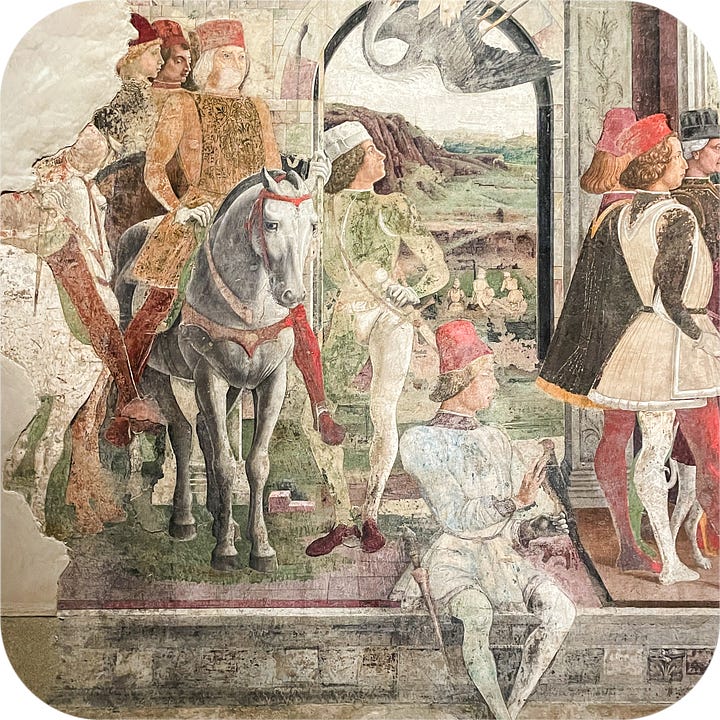
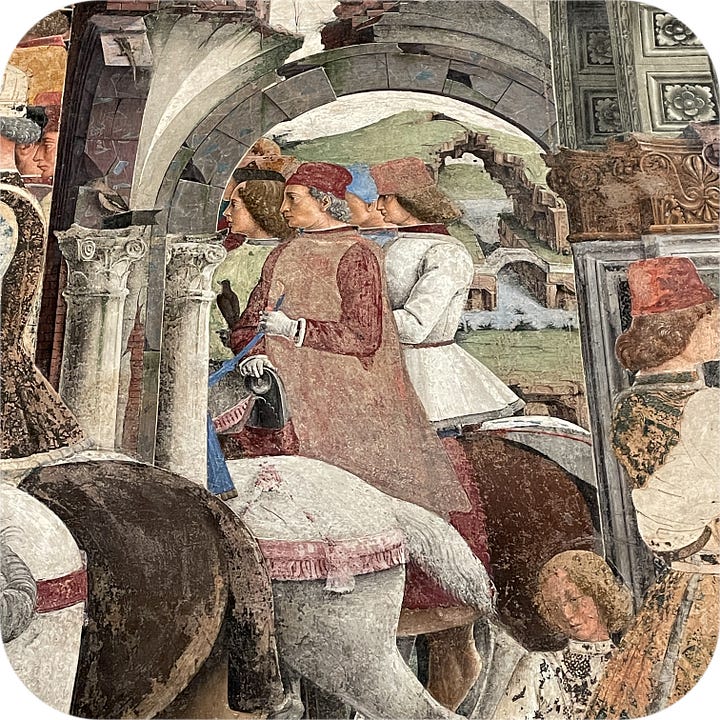
A few blocks from the monastery, in another palace built by the Este family are the remains of one of the most extraordinary fresco cycles of the Italian Renaissance. The frescoes in the Hall of Months at the Palazzo Schifanoia were commissioned by Borso d’Este - father of Ercole, grandfather of Alfonso - in the mid-15th century. The Hall of Months contains 12 panels on its four walls, one for each month of the year. Each panel is divided into three sections: the bottom band contains scenes from the Este family’s everyday life in Ferrara. The middle band contains personifications of the signs of the zodiac, and in the upper band are depicted the Olympian gods. The frescoes, executed by local artists including Francesco del Cossa, are highly accomplished and exceptionally beautiful.
In 1598, when the Este family relocated to Modena, the Palazzo Schifanoia was sold, and its frescoes were plastered over.
They were gone for almost two hundred years, completely erased to history.
In 1821, bits of the frescoes in the Hall of Months were rediscovered. Conservation work was started shortly afterward to recover what remained under the white paint. When it was completed, seven of the twelve panels had been thankfully saved - but it was a close call. The Palazzo Schifanoia frescoes could have easily been lost forever, and none of us would have been any the wiser.
History, truth, beauty - these things disappear all of the time.
Sometimes I wonder why I write these letters at all. And then I think about the writer Willie Morris who said, “It took me years to understand that words are often as important as experience, because words make experience last.”
As much as I’d like to, I can’t save history or truth or beauty. But I can save experiences. And so I keep writing…
XO
PS - If you enjoyed this letter, please consider becoming a subscriber to have Beautiful Things delivered to your inbox. Subscriptions are free, unless you choose otherwise. Absolutely no pressure at all, but if you’d like to support my writing, I’ve added a virtual tip jar as well: you can find the “Buy me a coffee” button below. Thank you for reading!






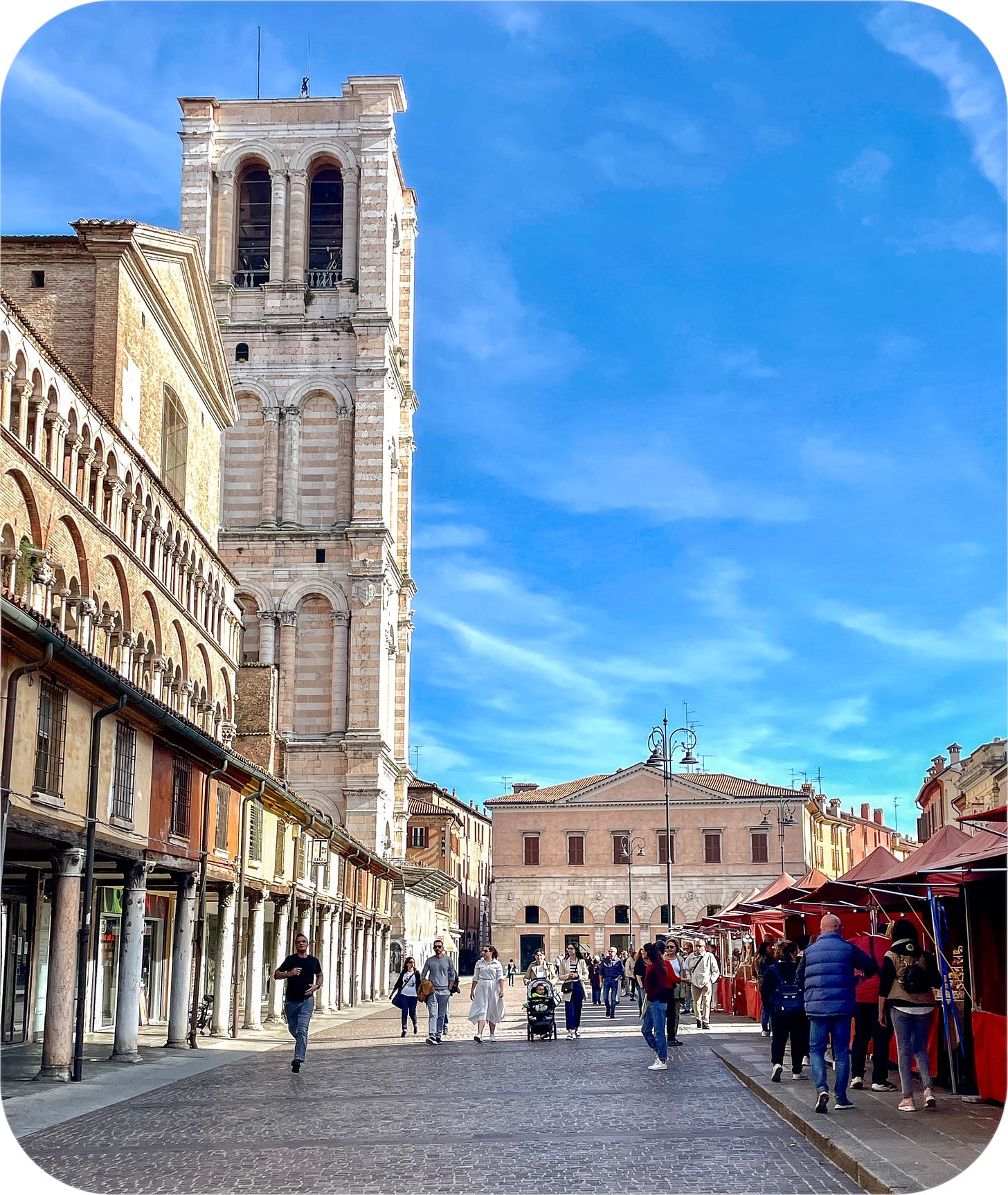
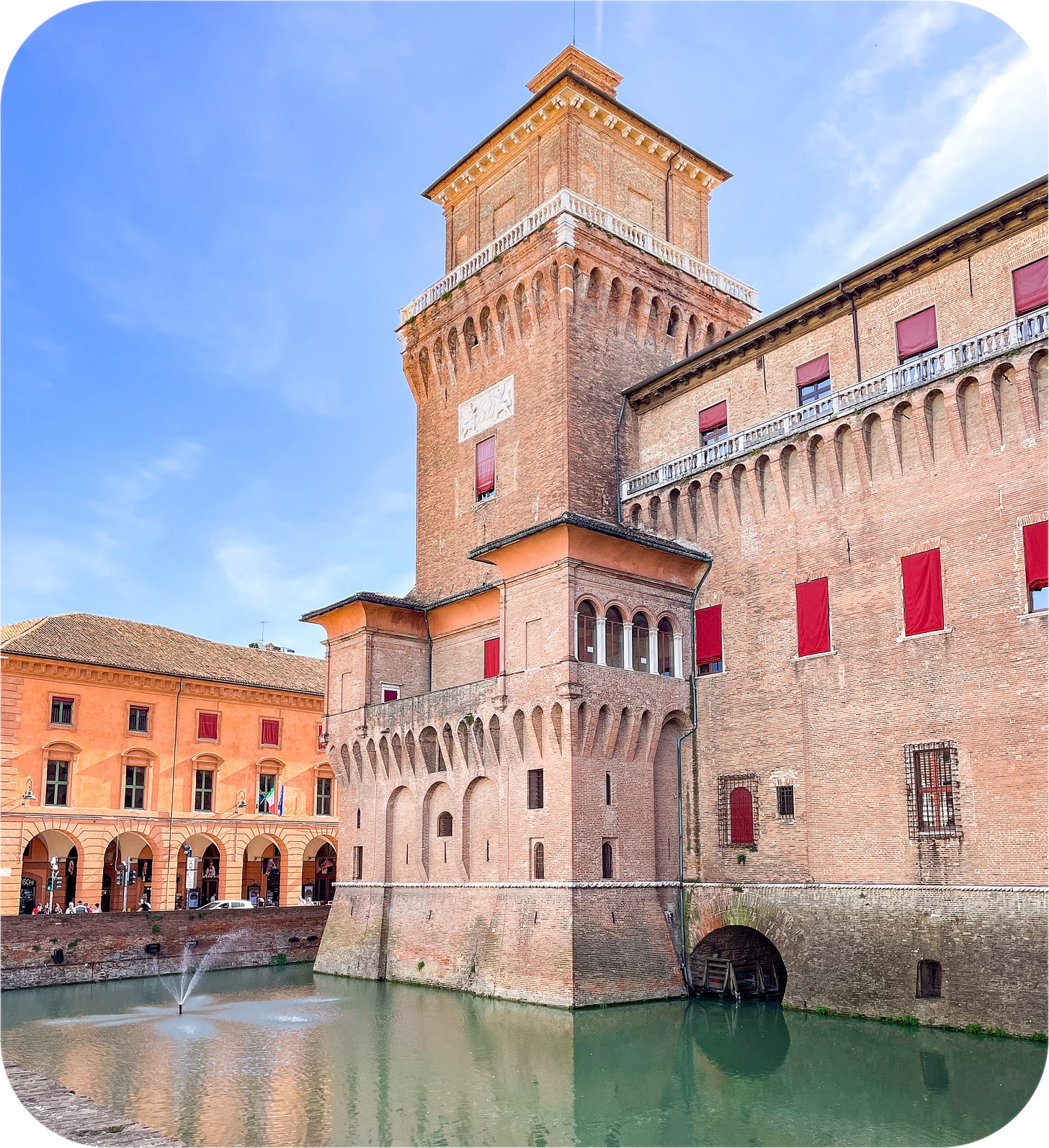
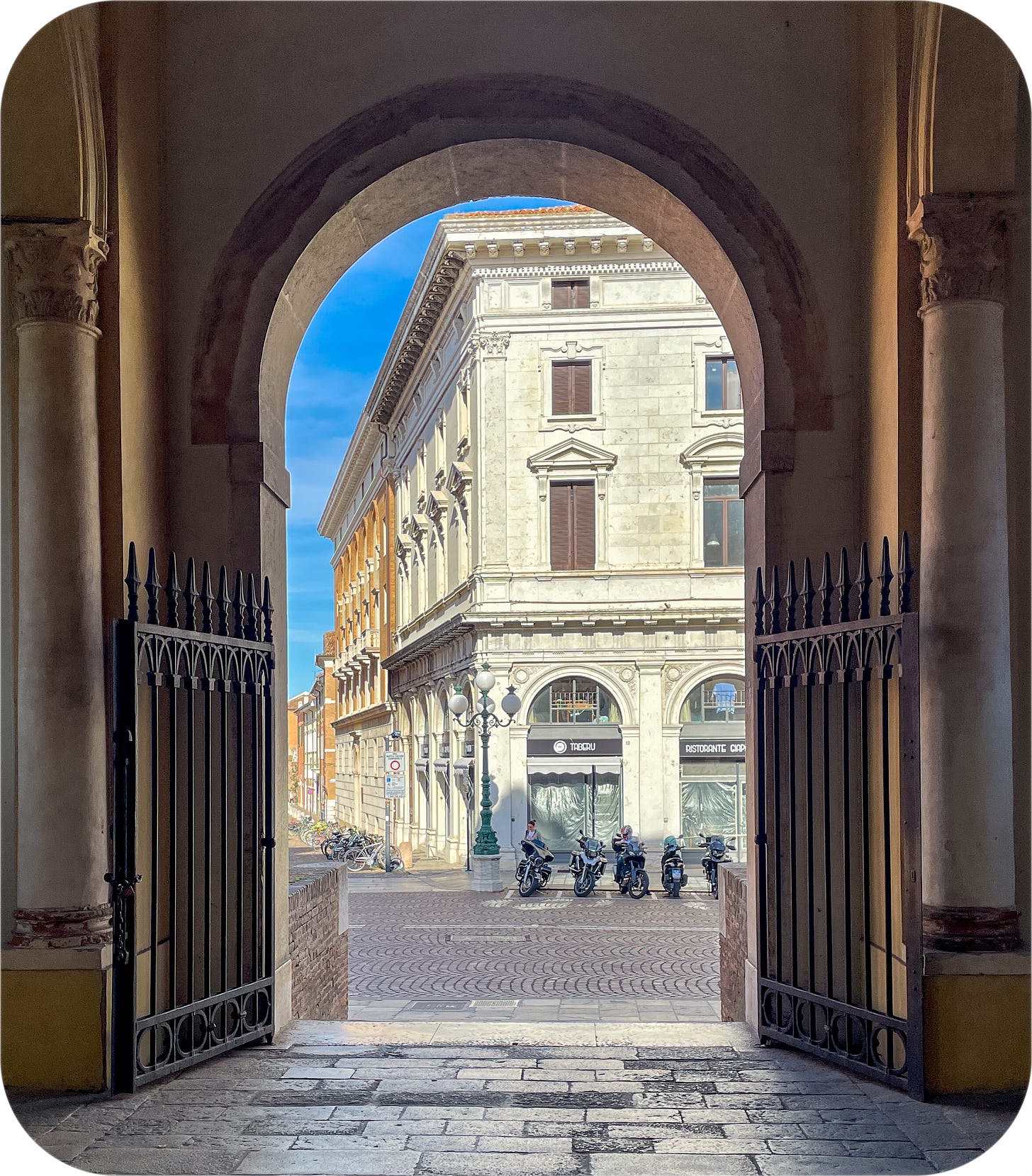
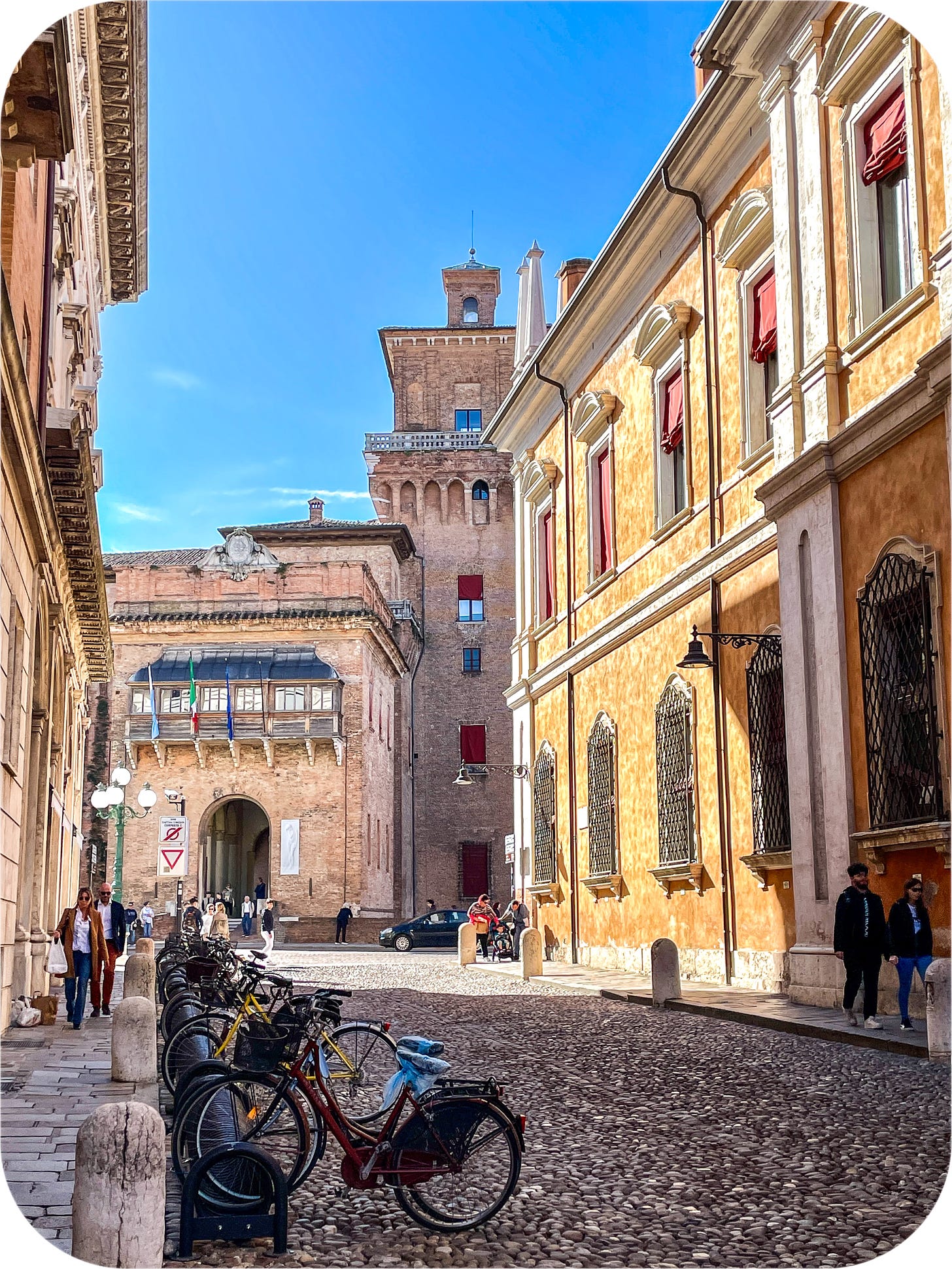
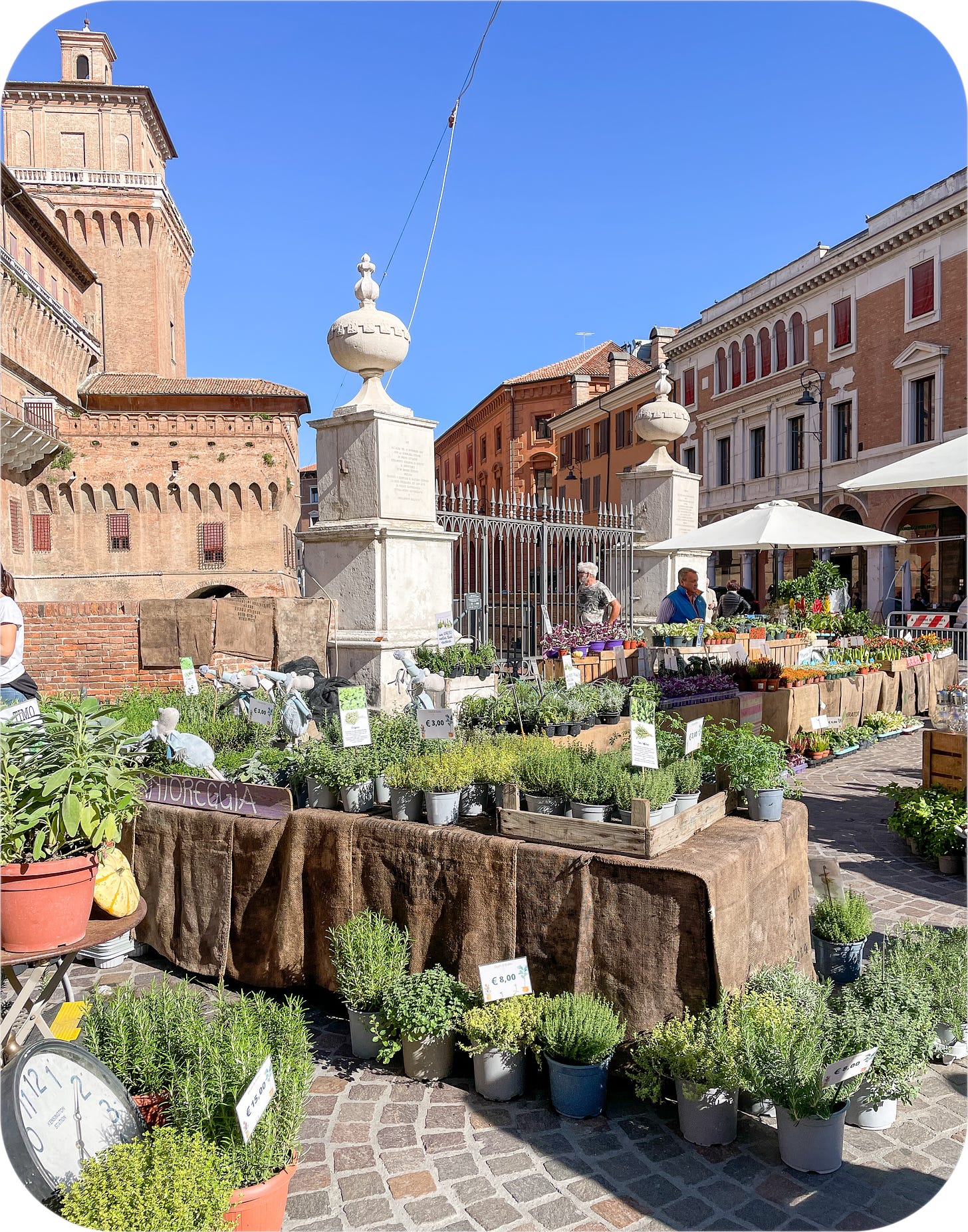
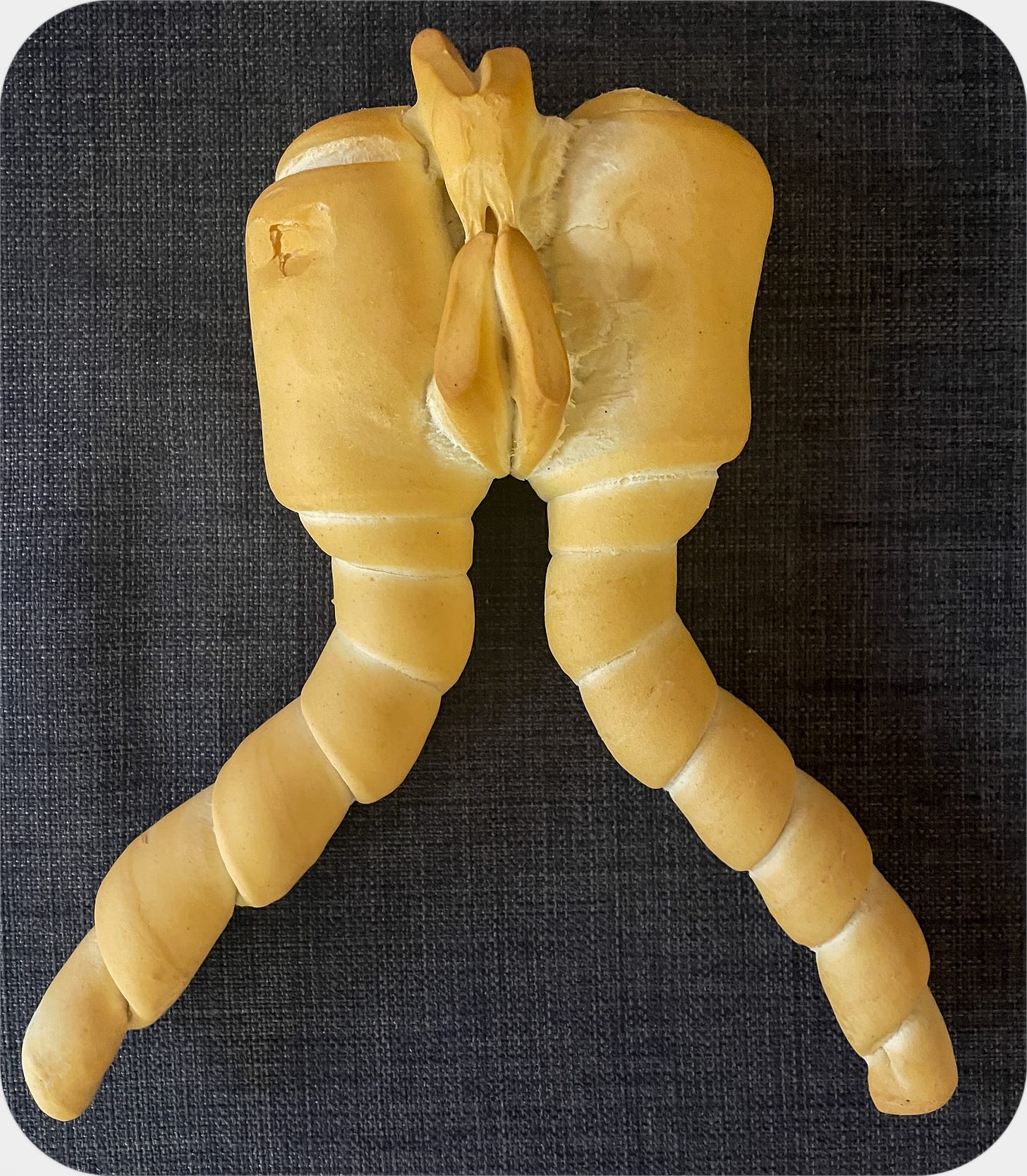
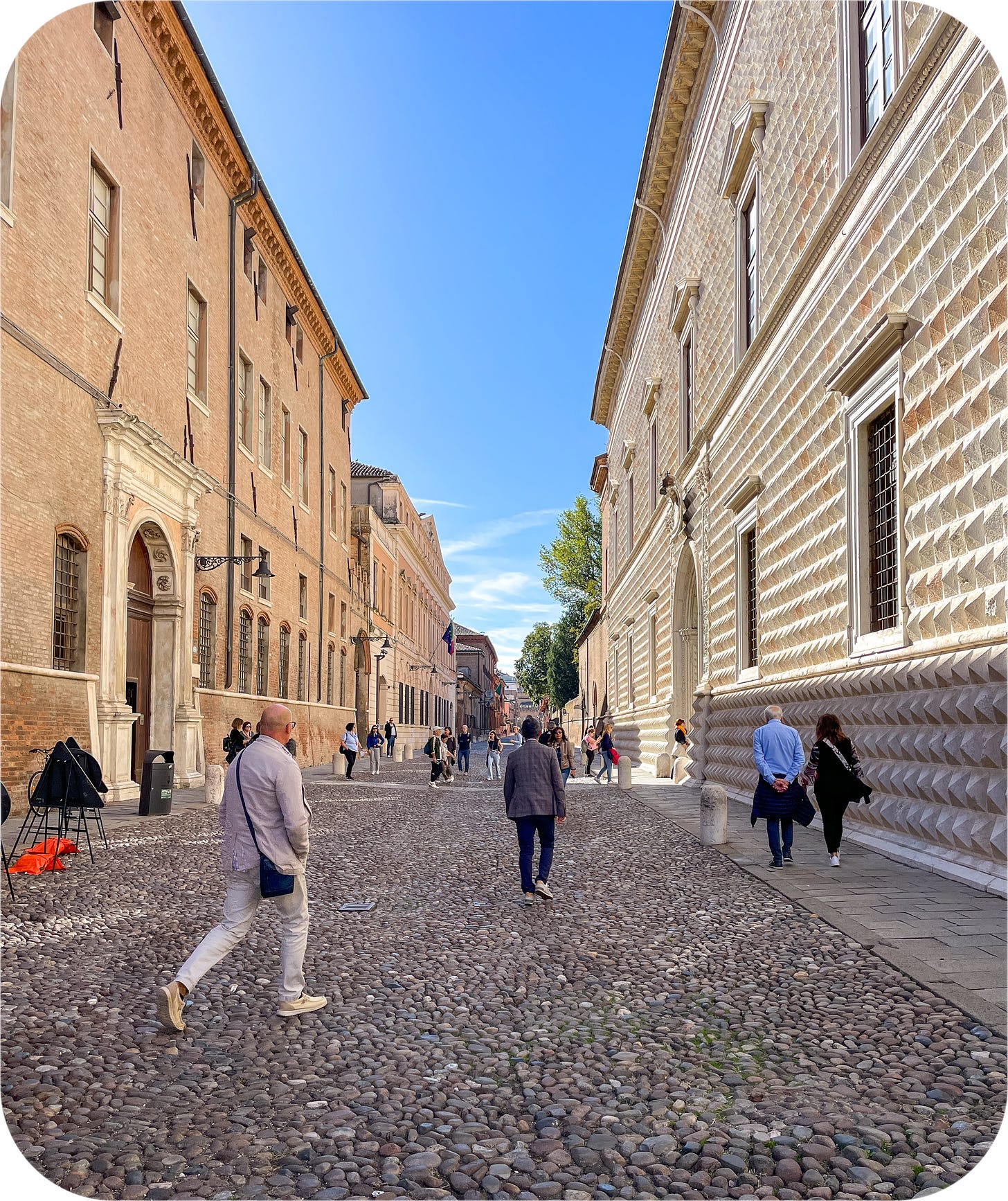
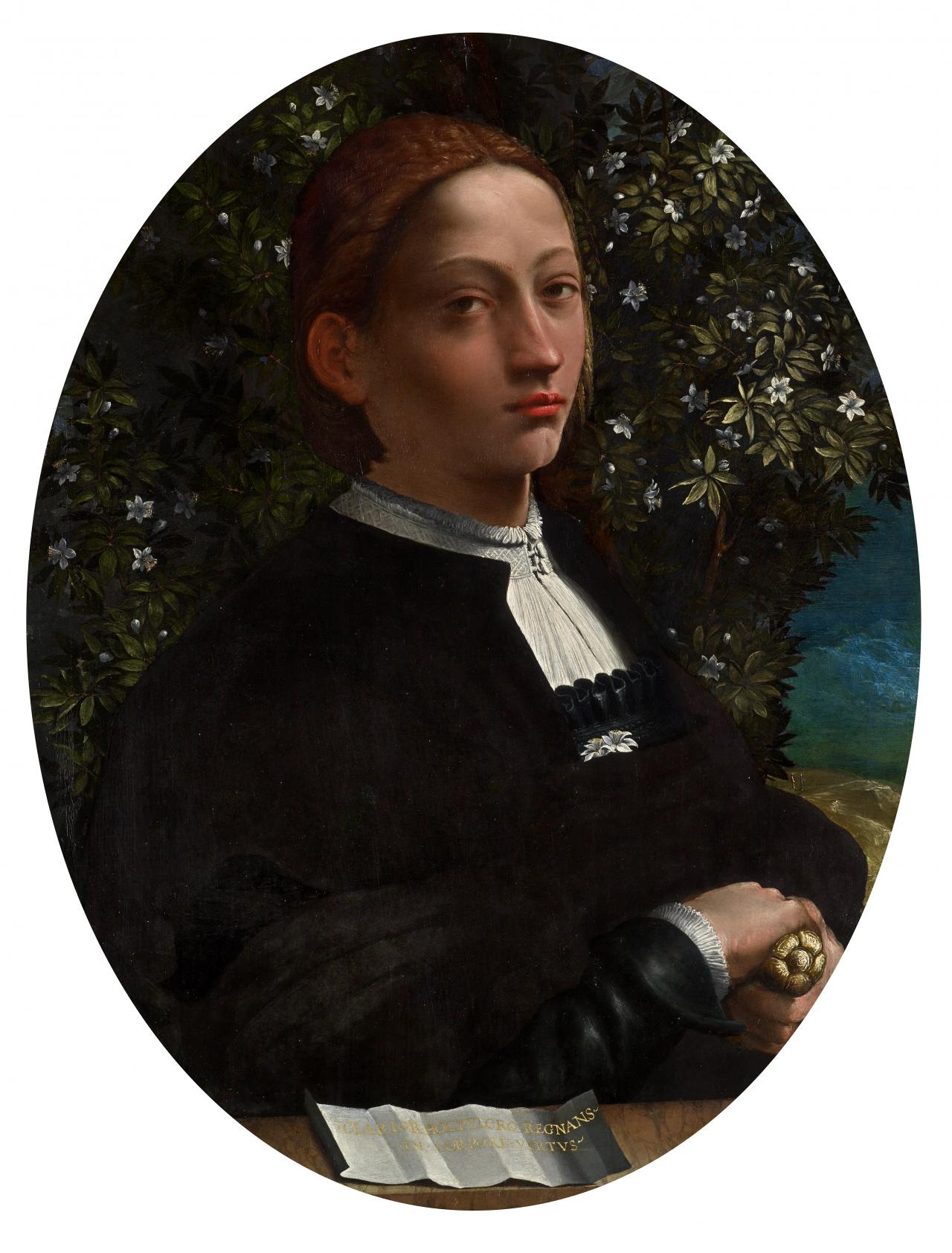
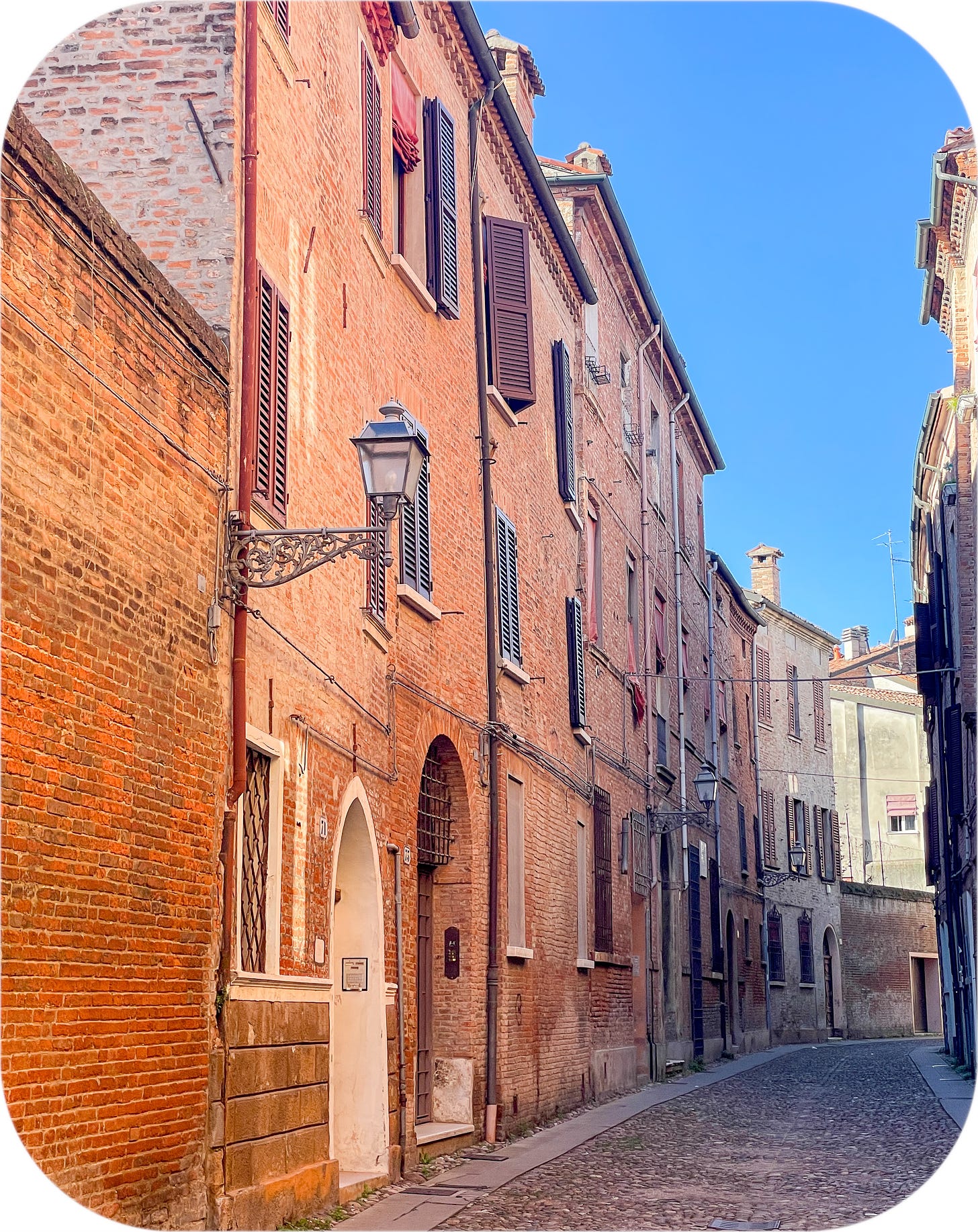
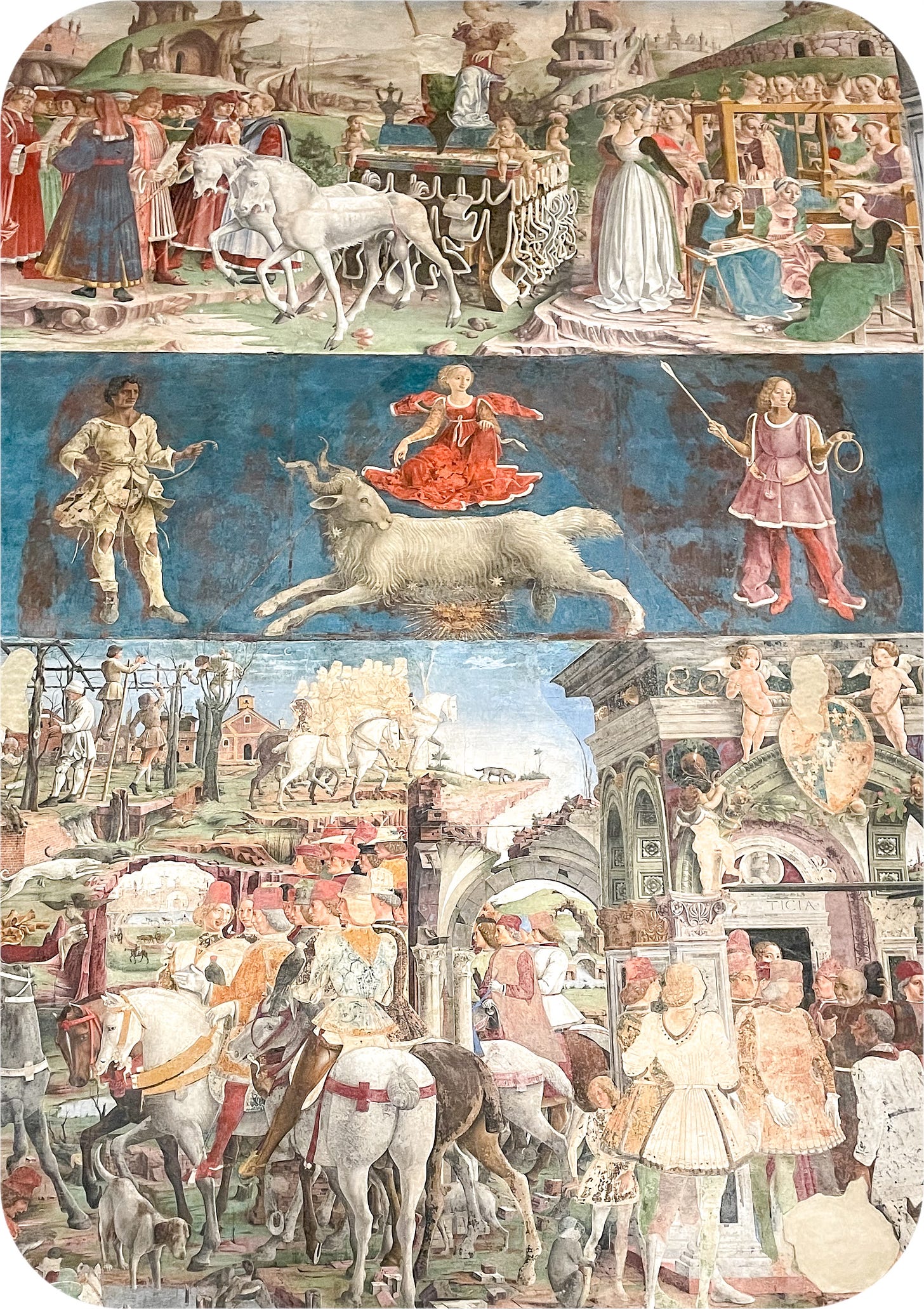
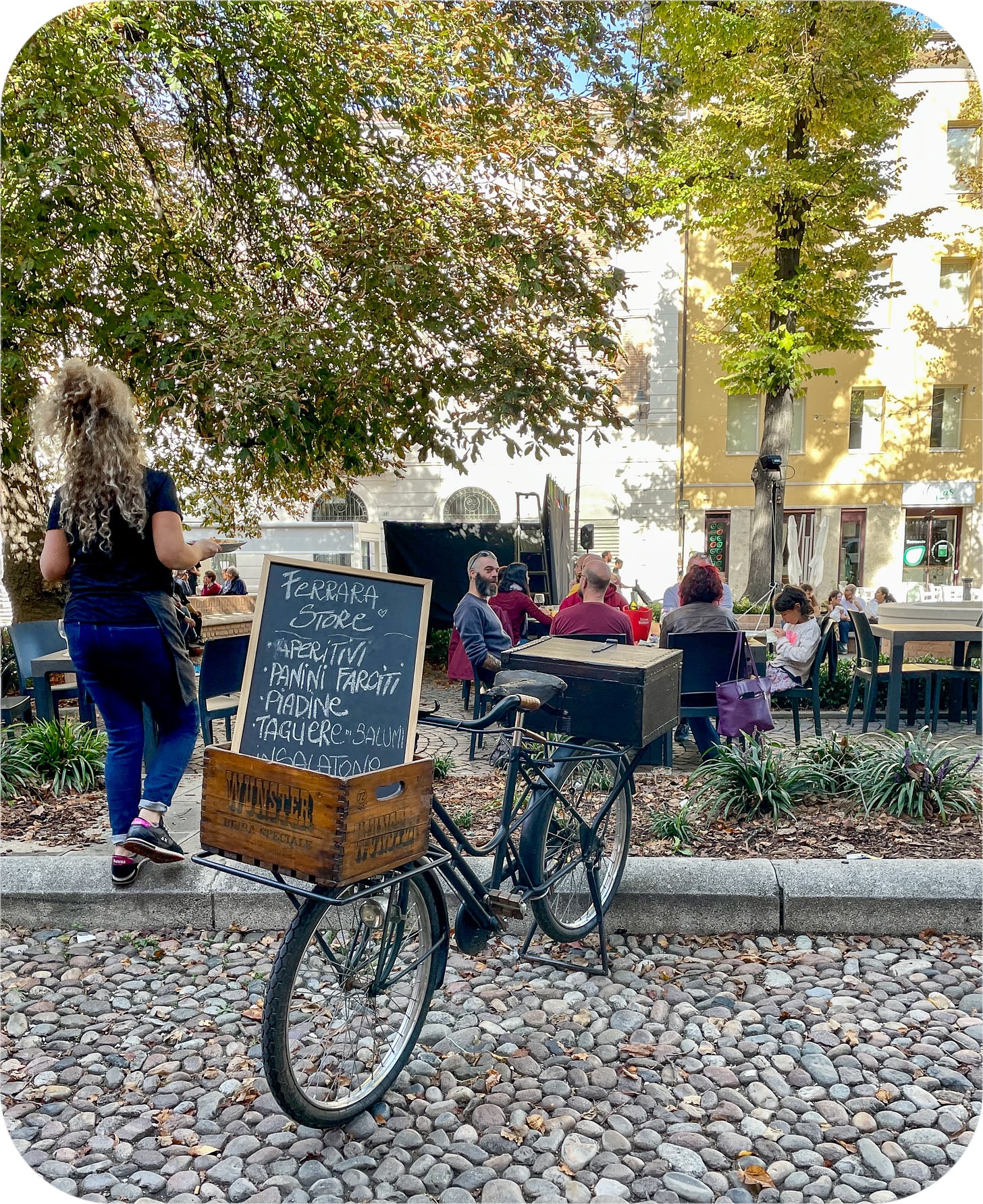


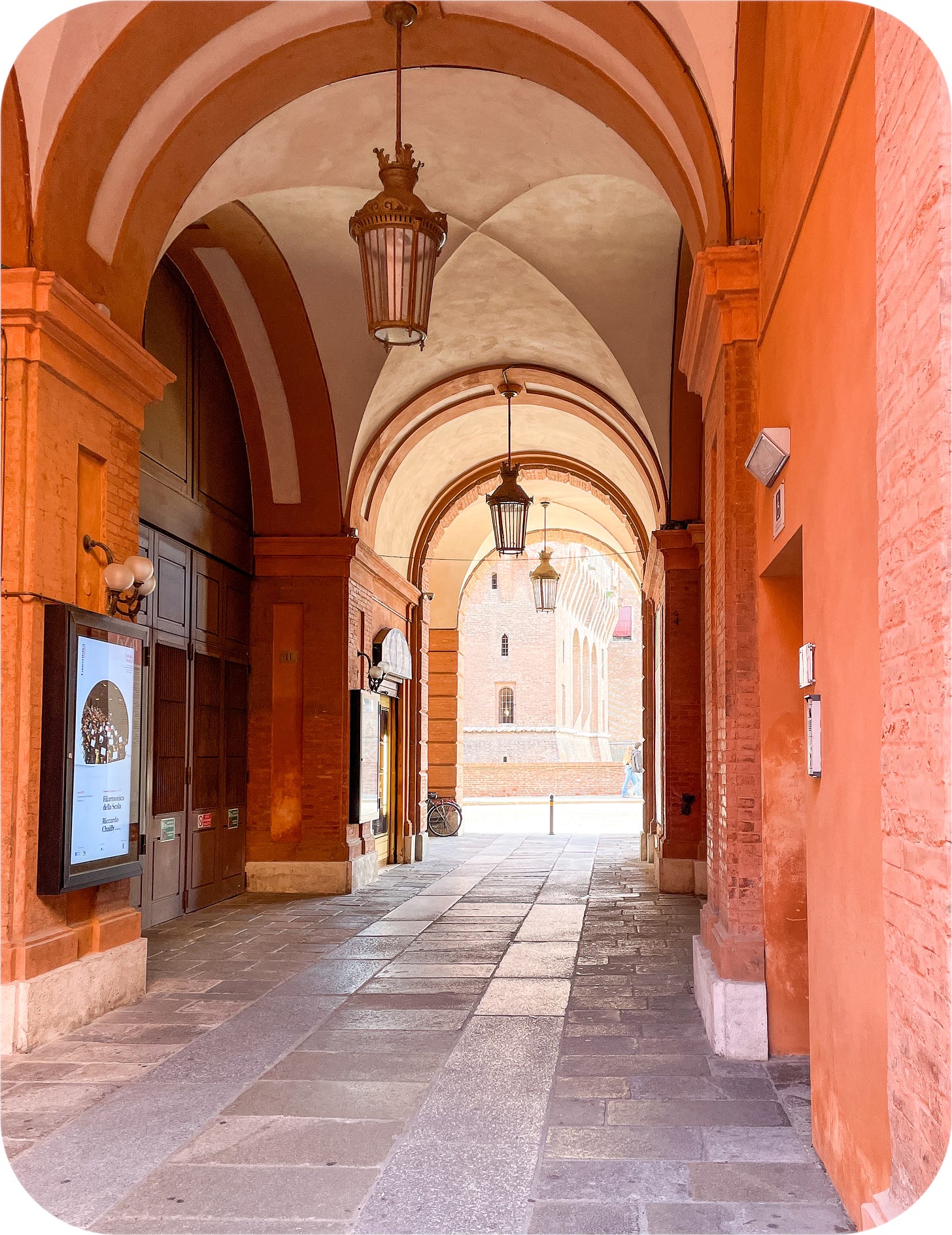
I was so excited to read this post after having enjoyed your one on Venice so much. I certainly was not disappointed! I love hearing the history, and now my mouth is wondering what that delightful bread tastes like. But I especially love your ending and reading that “words make experiences last.” That’s why I keep a travel journal. Just reading bits of it brings the sights and smells rushing back. I’m glad that you are making your experiences concrete and that you’ve invited us to share them. Oh! And I tried to buy you a coffee, but I am technologically inept, and I have never used Apple Pay before. So here’s to hoping I did it right!
So much interesting information! I recommend learning the phrase, “Excuse me, the line ends back there,” in Italian.